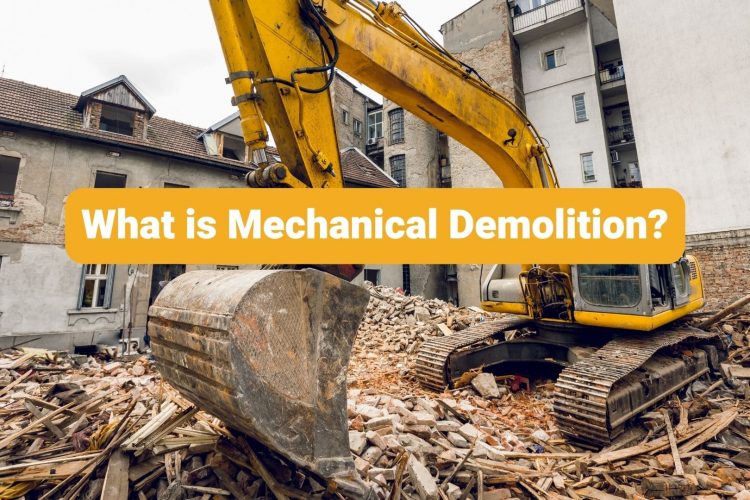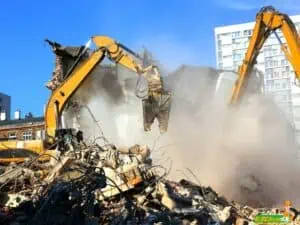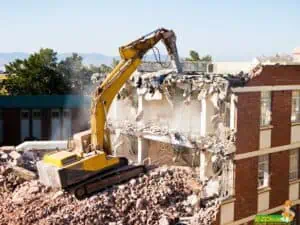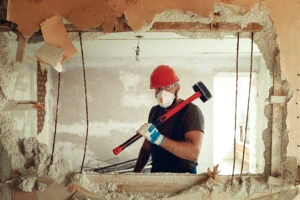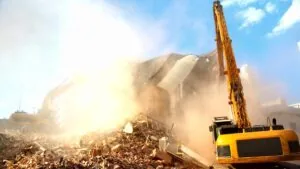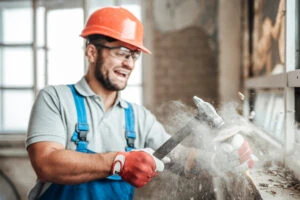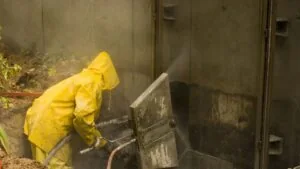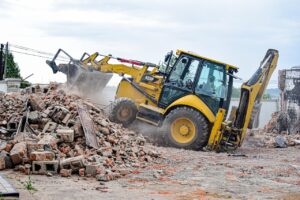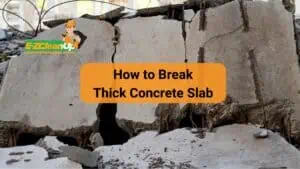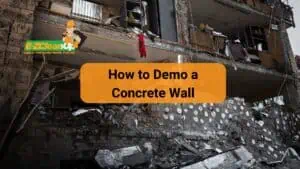Mechanical demolition is the process of dismantling buildings using equipment like cranes, bulldozers, and excavators. The structure is broken into smaller pieces for recycling or disposal.
This method is highly efficient, allowing for the quick and safe removal of structures with minimal manual labor.
In mechanical demolition, machines such as excavators, bulldozers, and wrecking balls are employed to break down and remove materials from the site.
The popularity of mechanical demolition stems from its ability to save time, reduce labor costs, and enhance safety during the demolition process.
Read on to learn more about the intricacies of mechanical demolition, its advantages, and how it can contribute to a successful construction or renovation project.
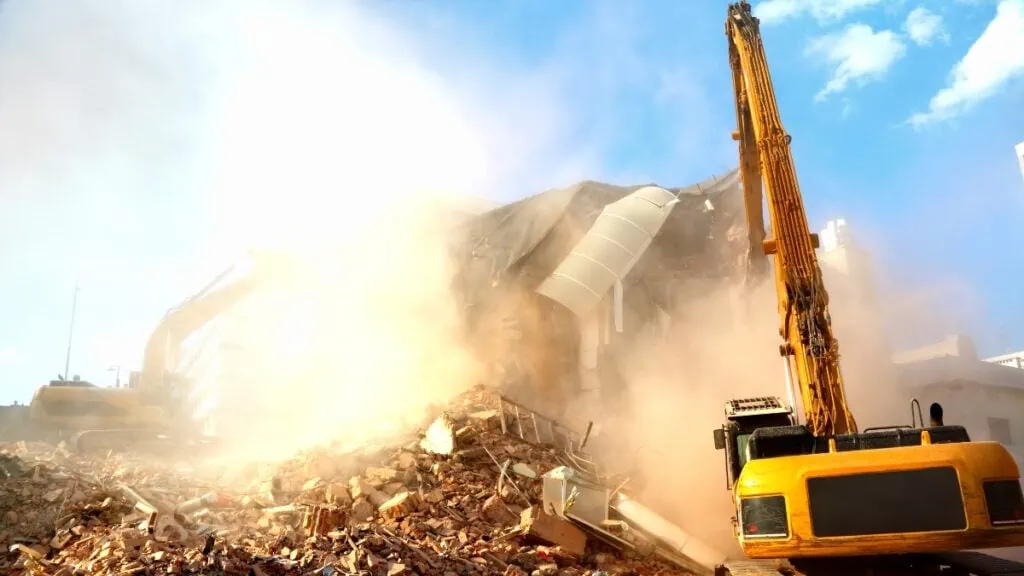
In Which Projects Is Mechanical Demolition Needed?
Mechanical demolition is often required in various construction and renovation projects, including the following:
🏗️ Large-scale building demolition
When demolishing massive structures such as high-rise buildings, shopping malls, or factories, mechanical demolition is the most efficient method. The use of heavy machinery ensures the safe and quick removal of large amounts of materials, reducing the overall project duration.
🚧 Infrastructure projects
Mechanical demolition plays a crucial role in infrastructure projects like roadways, bridges, and tunnels. The specialized equipment used can effectively dismantle and remove large volumes of concrete, asphalt, and steel, making way for new construction.
🏚️ Residential redevelopment
In urban areas where old or dilapidated residential buildings need to be replaced with modern housing units, mechanical demolition is the go-to method. It allows for the fast and secure removal of old structures, creating space for new development.
🏭 Industrial site clearance
When it comes to clearing industrial sites, mechanical demolition proves to be an invaluable asset. The equipment used can efficiently handle the removal of hazardous materials, contaminants, and other waste, ensuring a safe and clean environment for new construction.
🏢 Selective demolition
In projects where specific parts of a structure need to be removed while preserving the rest, mechanical demolition offers precision and control.
Machineries such as hydraulic shears, grapples, and hammers can be utilized to carefully dismantle selected areas without causing damage to adjacent structures.
As evident, mechanical demolition’s ability to handle complex tasks with minimal disruption to the surrounding environment makes it a preferred choice for many developers and contractors.
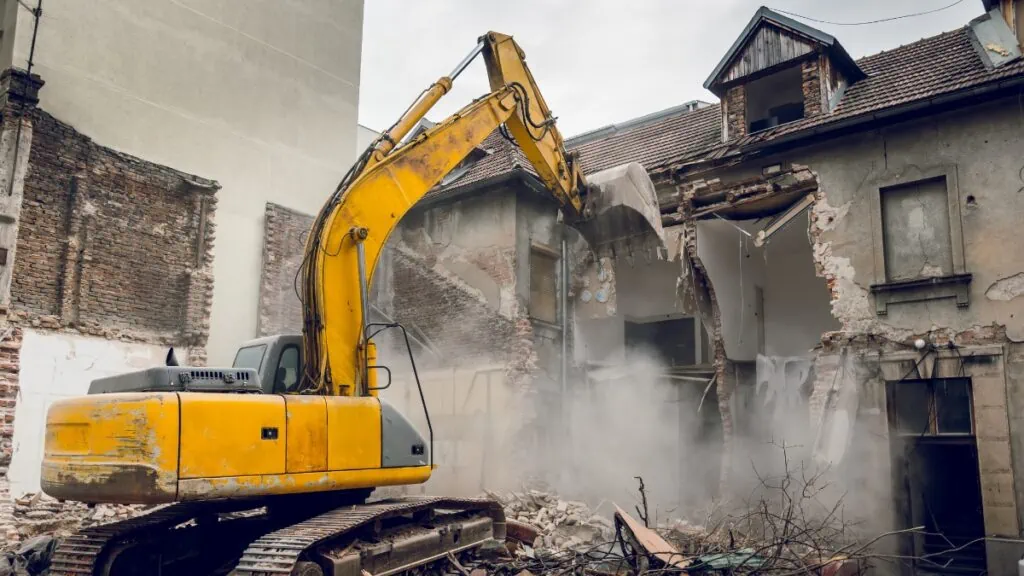
What Affects The Cost of Mechanical Demolition?
💲 Size of the project
The larger the structure, the more labor, machinery, and time will be required for demolition. As a result, the cost increases with the project’s size.
🏢 Type of structure
Different types of buildings require different demolition techniques and equipment. For example, demolishing a concrete building might be more expensive than a wooden structure due to the additional machinery and labor needed.
🚧 Site accessibility
If the demolition site is challenging to access or located in a densely populated area, it can increase the cost of the project.
This is because additional measures need to be taken to ensure the safety of the surrounding environment and prevent damage to neighboring properties.
🌐 Local regulations and permits
Depending on the location of the project, there might be specific rules and regulations to follow. Acquiring the necessary permits and adhering to local guidelines can add to the overall cost of mechanical demolition.
If you’re reading this from Pennsylvania, you might want to read our blog post on how to get a demolition permit in Pennsylvania.
♻️ Waste disposal and recycling
The proper management and disposal of demolition waste can significantly impact the project’s cost. This includes the transportation and processing of recyclable materials and the disposal of hazardous waste.
👷 Labor costs
The cost of skilled labor varies depending on the region and local market conditions. Higher labor costs will inevitably increase the overall cost of mechanical demolition.
🚜 Equipment rental or purchase
The cost of renting or purchasing the required machinery, such as excavators, bulldozers, and wrecking balls, can significantly impact the project’s expenses.
💼 Contractor’s overhead and profit
The demolition contractor’s overhead expenses and profit margins will also influence the final cost of the project. Comparing quotes from different contractors can help you find the best value for your specific needs.
🔁 Unforeseen circumstances
Unexpected issues, such as discovering hazardous materials, hidden structural problems, or weather-related delays, can increase the overall cost of mechanical demolition.
Given these variables, it’s challenging to provide an exact cost for mechanical demolition without considering the specific details of a project. It’s essential to obtain multiple quotes from different demolition contractors to compare and choose the best option for your needs.
Mechanical Methods of Demolition
Various mechanical methods can be employed in the demolition process, each with its specific advantages and suitability for different projects.
Here are some of the most commonly used techniques:
🔨 Wrecking Ball
This classic demolition method involves using a heavy steel ball (weighing up to 13,500 pounds) suspended from a crane to demolish structures. The wrecking ball is swung or dropped onto the building, causing it to collapse under the force of the impact. This method is suitable for demolishing concrete or masonry structures but requires skilled crane operators and precise control.
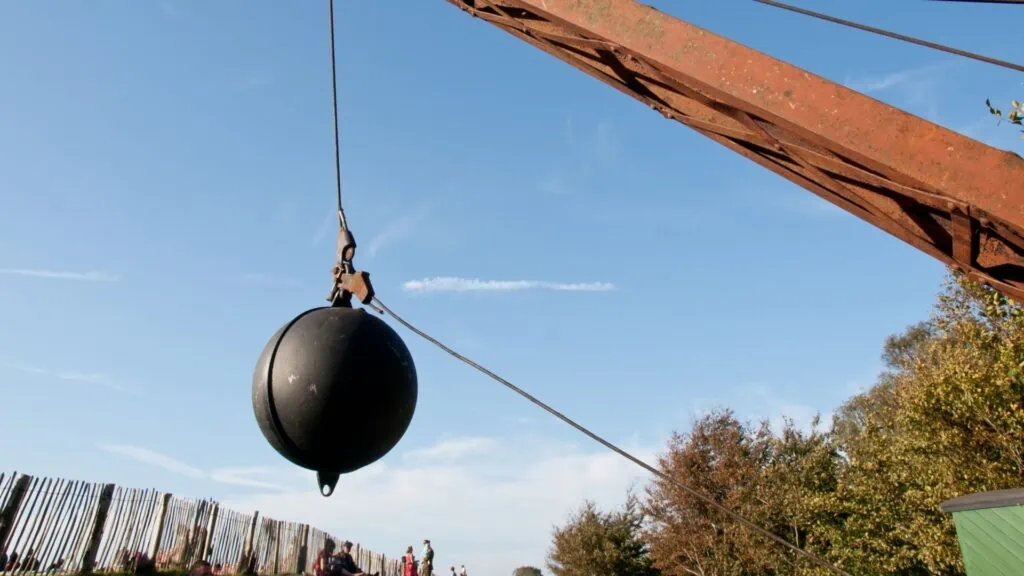
🚧 Hydraulic Excavators
Hydraulic excavators equipped with specialized attachments, such as shears, hammers, or crushers, are widely used in mechanical demolition. These machines can break down structures efficiently, and their long reach allows for safe and precise work. Hydraulic excavators are suitable for a wide range of projects, including demolishing reinforced concrete, steel structures, and residential buildings.
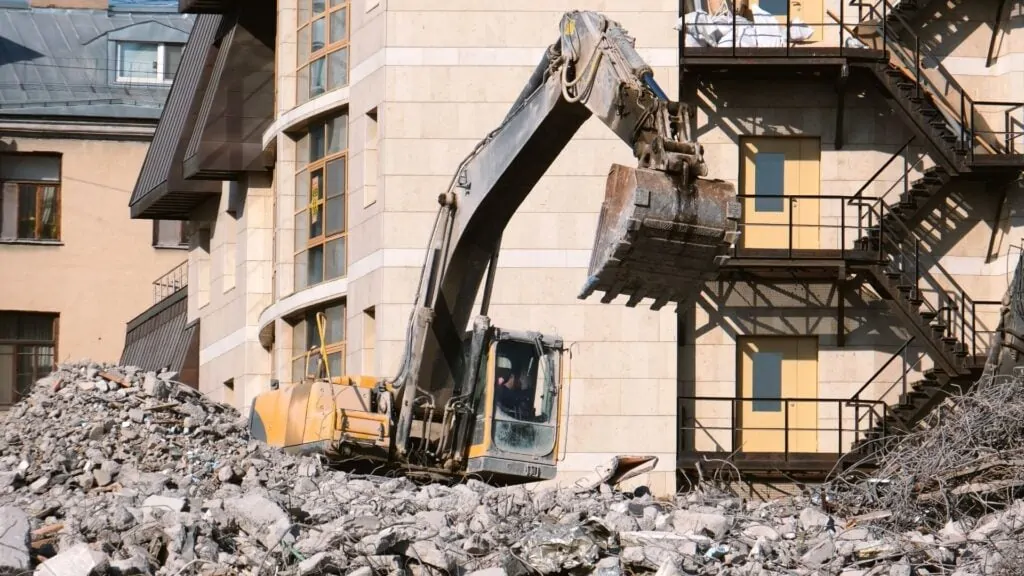
🔩 High Reach Demolition Excavators
These are specialized hydraulic excavators with extended booms, allowing for the demolition of tall structures from a safe distance.
High reach demolition excavators can be equipped with various attachments, such as shears, crushers, or hammers, to tackle different materials and structural elements. This method is ideal for demolishing multi-story buildings, bridges, and industrial facilities.
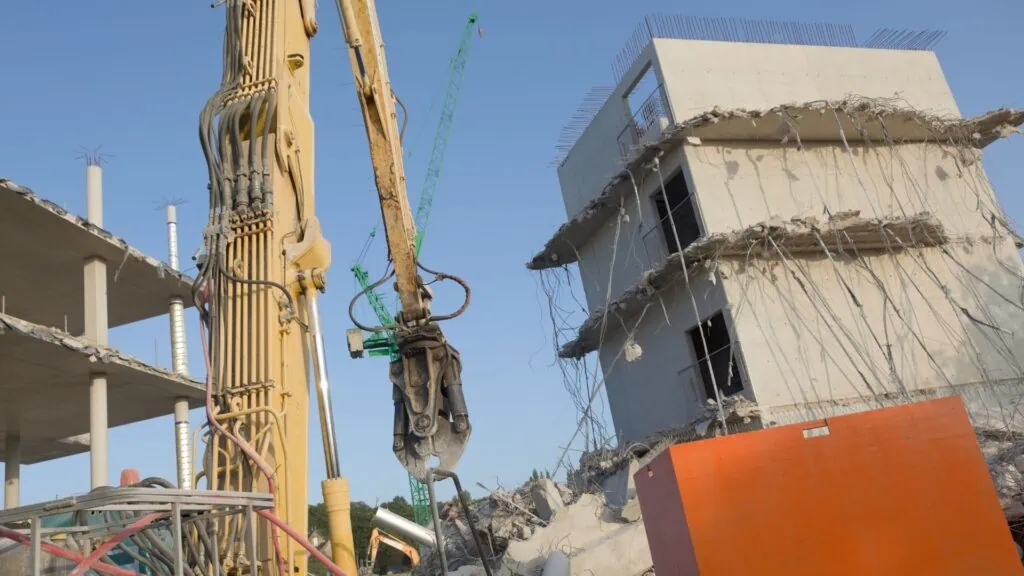
💣 Explosives
While not strictly a mechanical method, the controlled use of explosives is sometimes employed alongside mechanical techniques to bring down large structures quickly and efficiently. This method, called implosion, requires careful planning, skilled professionals, and strict safety measures. It’s often used for large-scale projects, such as demolishing skyscrapers, towers, or bridges.
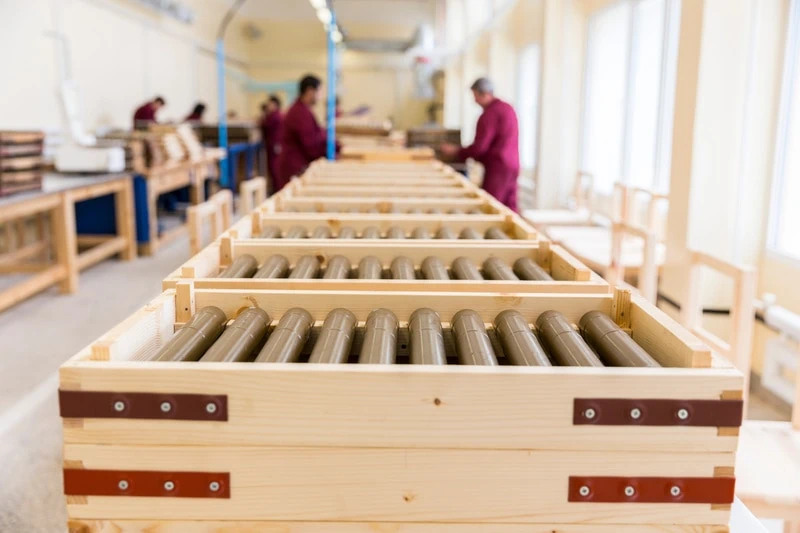
🔗 Robotic Demolition Machines
These are remote-controlled demolition machines, often resembling mini excavators, equipped with various demolition tools. Robotic demolition machines can access tight spaces and provide precise control, making them suitable for interior or selective demolition work. They are commonly used in projects that require the removal of hazardous materials or when working in confined spaces.
Each of these mechanical methods of demolition has its advantages and limitations, and selecting the appropriate technique depends on factors such as the size, location, and materials of the structure being demolished.
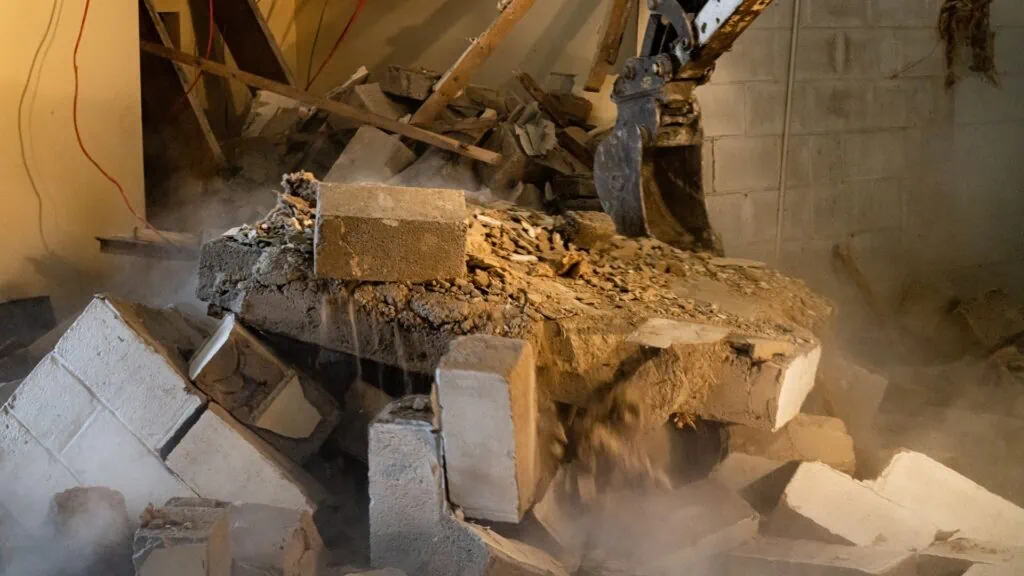
Machines Used in Mechanical Demolition
Have you chosen your method? Now let’s get down to the gear!
Various machines and equipment are used in the mechanical demolition process to efficiently and safely break down structures.
Here are some of the most commonly used machines in mechanical demolition:
Cranes
Cranes play a crucial role in demolition projects, especially when using the wrecking ball method. They are used to suspend and control the wrecking ball, ensuring precise and effective demolition. Cranes can also be employed to lift and remove large debris during the cleanup process.
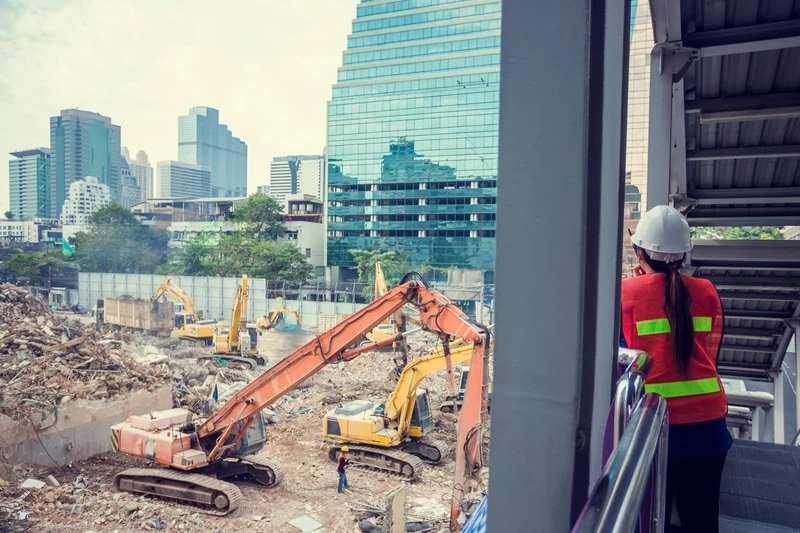
Bulldozers
Bulldozers are powerful machines commonly used in demolition projects to push and break down walls, remove debris, and level the ground. Equipped with strong blades, bulldozers can effectively tackle a variety of materials, including wood, masonry, and even metal.
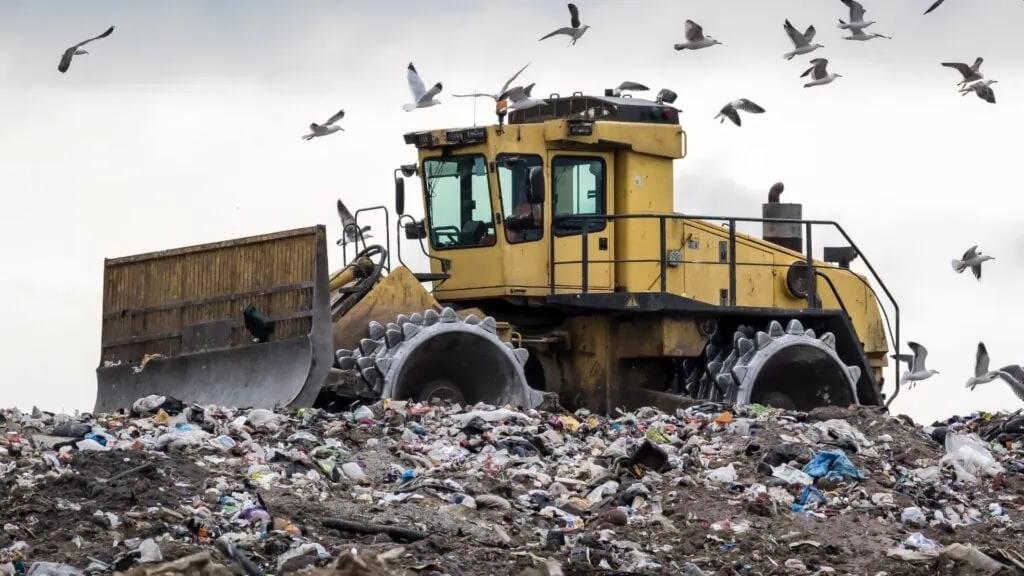
Skid Steer Loaders (Bobcats)
These versatile machines, also known as Bobcats, are compact and maneuverable, making them ideal for small-scale demolition projects or selective demolition tasks. Skid steer loaders can be equipped with various attachments, such as hammers, grapples, or buckets, to handle different demolition and debris removal tasks.
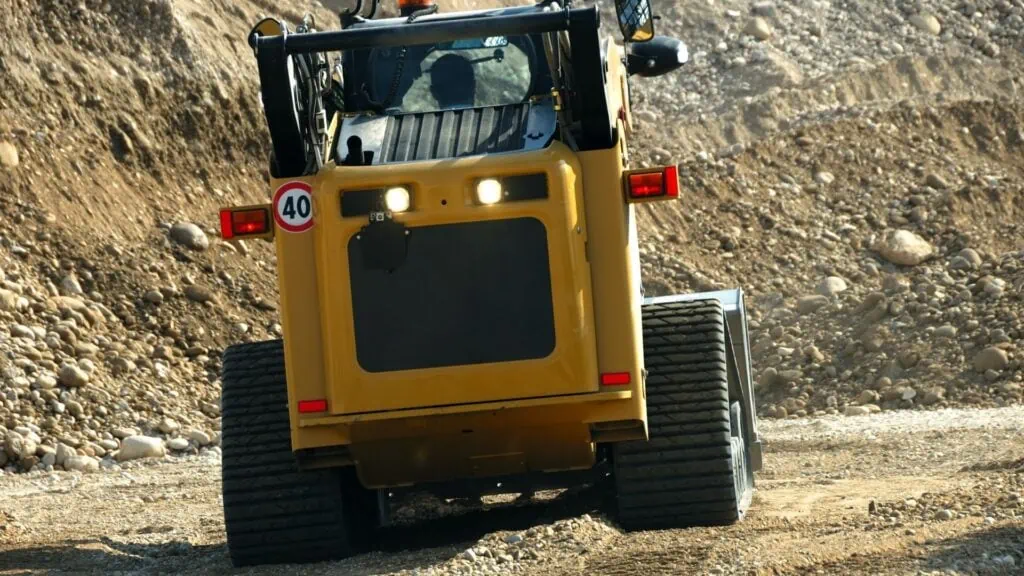
Concrete Cutters and Breakers
These specialized machines are designed to cut and break concrete efficiently. Concrete cutters use diamond-tipped blades to make precise cuts in reinforced concrete, while concrete breakers employ hydraulic hammers to break up large slabs and structures. Both machines are essential for demolishing concrete structures and removing concrete debris.
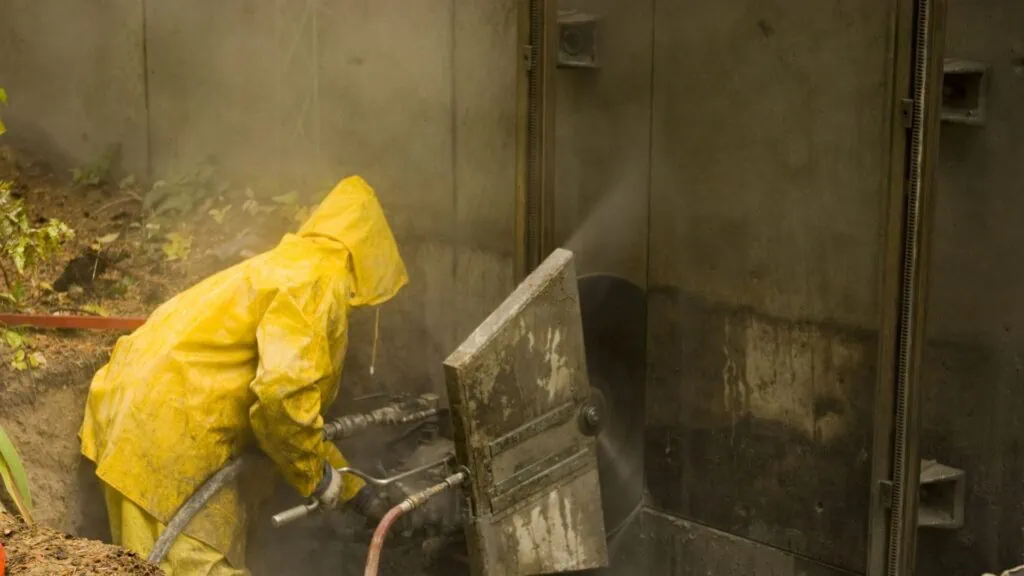
Material Handlers
Material handlers are used in demolition projects to sort, move, and load debris for removal. These machines are equipped with grapples, magnets, or clamshell buckets to handle various materials, such as metal, wood, or concrete. Material handlers play a crucial role in the efficient and safe cleanup of demolition sites.
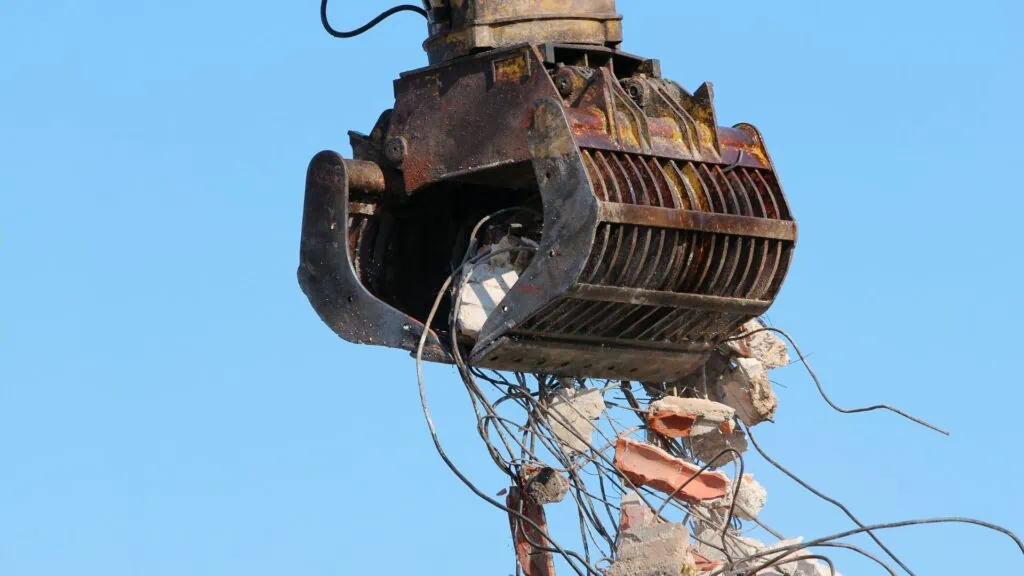
Advantages and Disadvantages of Mechanical Demolition
| Advantages | Disadvantages | |
| 1. | Speed: Mechanical demolition is faster compared to soft demolition. | Noise pollution: Heavy machinery can generate significant noise, disturbing the surrounding environment. |
| 2. | Efficiency: Large structures can be demolished more effectively using heavy machinery, reducing labor costs. | Dust and debris: Demolition can create considerable amounts of dust and debris, leading to air pollution and potential health hazards. |
| 3. | Safety: Operators are often at a safer distance from the demolition site, reducing the risk of injury. | Limited precision: Mechanical demolition can lack the precision required for partial or selective demolition, potentially damaging adjacent structures. |
| 4. | Versatility: Different types of machinery can be used for various demolition tasks, making it adaptable. | Restricted access: Some demolition sites may not be accessible for heavy machinery due to space constraints or load-bearing limitations. |
| 5. | Cost-effective: In many cases, mechanical demolition is more cost-effective than manual methods due to reduced labor and time. | Environmental impact: The use of heavy machinery can cause damage to soil, flora, and fauna at the site, as well as contribute to CO2 emissions. |
*Keep in mind that this table provides a general overview, and the specific advantages and disadvantages can vary depending on the context, size of the project, and available resources.
When to Combine Demolition Methods
In certain situations, a combination of demolition methods may be necessary to achieve the best results. Here are a few cases where using multiple demolition techniques might be beneficial:
1. Complex Structures:
Buildings with intricate designs or unique architectural features may require a mix of demolition methods to ensure safe and efficient removal. For instance, a combination of manual and mechanical demolition can be useful for preserving specific elements while removing others.
2. Mixed-Use Buildings:
Structures that house both residential and commercial spaces may need different approaches to accommodate the unique needs of each area. By using a combination of demolition methods, contractors can effectively address the varying requirements of each space.
3. Historical Preservation:
When preserving historical buildings or structures, a combination of demolition techniques may be necessary to protect valuable features while removing hazardous or nonessential elements.
4. Tight Spaces & Access Constraints:
In urban environments or sites with limited access, a combination of manual and mechanical demolition methods may be needed to navigate the constraints and safely remove the structure.
5. Environmental Considerations:
To minimize the environmental impact of a demolition project, multiple methods may be employed. For example, using manual techniques for selective deconstruction and recycling, combined with mechanical methods for the efficient removal of larger sections.
6. Safety & Regulations:
Some projects may have strict safety regulations that require a combination of demolition methods to comply with local building codes or industry standards.
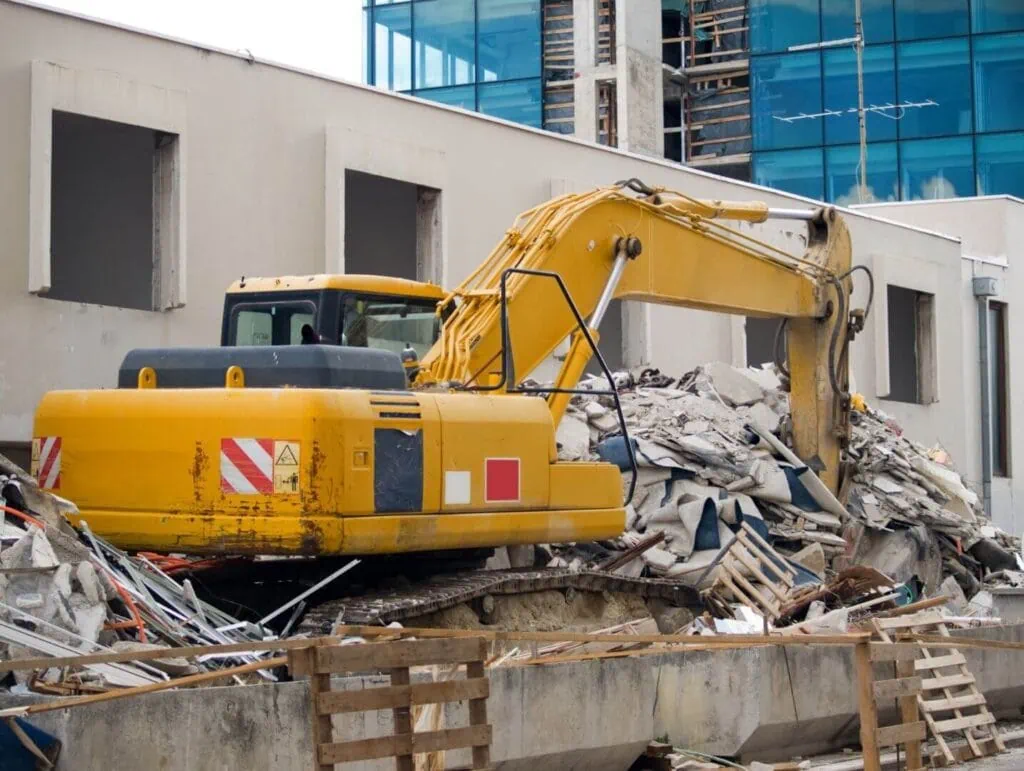
Mechanical Demolition Safety
Mechanical demolition is a powerful and efficient process, but it also involves potential risks. Ensuring safety during mechanical demolition is critical to prevent accidents and minimize hazards. Here are 7 key safety aspects to consider:
1. Proper Planning: Before the demolition process begins, a thorough plan must be in place. This includes a comprehensive site evaluation, identifying hazards, and establishing safety protocols. Proper planning helps to minimize risks and ensure a smooth demolition process.
2. Training and Certification: Operators of mechanical demolition equipment should be well-trained and certified. This ensures they have the necessary skills and knowledge to safely operate the machinery and carry out demolition tasks.
3. Personal Protective Equipment (PPE): Workers involved in mechanical demolition should wear appropriate PPE, such as helmets, safety goggles, gloves, and steel-toed boots. This protects them from potential hazards, including falling debris, dust, and noise.
4. Regular Maintenance and Inspection: Demolition equipment must be regularly inspected and maintained to ensure it is in good working condition. This reduces the risk of equipment failure or accidents during the demolition process.
5. Hazardous Material Management: Proper handling and disposal of hazardous materials, such as asbestos or lead, are crucial to maintaining safety during mechanical demolition. Specialized training and procedures must be followed to ensure the safe removal and disposal of these materials.
6. Dust and Noise Control: Dust and noise are common hazards during mechanical demolition. Implementing dust suppression methods, such as water mist systems, and providing hearing protection for workers can help mitigate these risks.
7. Emergency Preparedness: An emergency response plan should be in place, including clear communication channels and designated evacuation routes. Workers should be familiar with the plan and know what to do in case of an emergency.
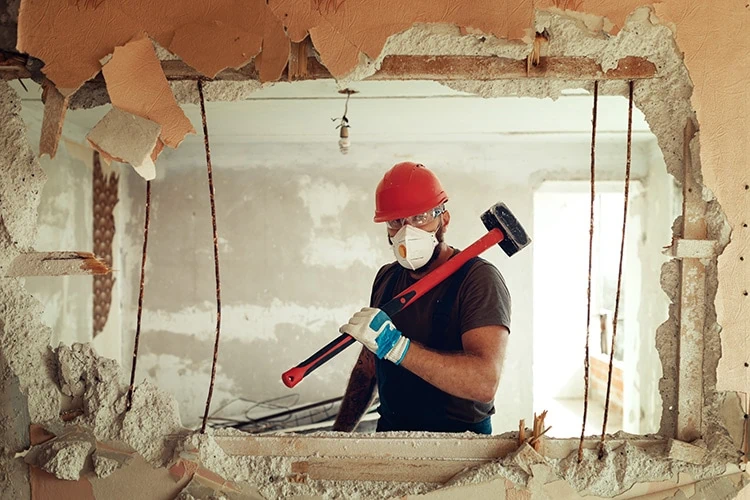
Creating a Mechanical Demolition Plan
A well-thought-out mechanical demolition plan is crucial for ensuring a safe, efficient, and successful demolition process. Here’s a step-by-step guide on how to create a mechanical demolition plan:
1. Site Evaluation and Assessment:
Begin by conducting a thorough site evaluation to gather essential information about the building or structure to be demolished. This includes its size, location, age, materials, and any hazardous substances present.
2. Choose the Right Demolition Method:
Based on the site evaluation, determine the most suitable mechanical demolition method. Consider factors such as the type of structure, surrounding environment, and project timeline when making this decision.
3. Develop a Safety Plan:
Safety should always be a top priority. Create a detailed safety plan outlining hazard identification, risk mitigation measures, personal protective equipment requirements, emergency procedures, and worker training.
4. Identify and Manage Hazardous Materials:
If any hazardous materials, such as asbestos or lead, are present, ensure proper handling and disposal methods are included in the demolition plan. This may involve hiring specialized contractors and following specific regulations.
5. Obtain Necessary Permits and Approvals:
Before starting the demolition, acquire all necessary permits and approvals from relevant authorities. This may include building permits, zoning approvals, and environmental clearances.
6. Coordinate with Utility Companies:
Coordinate with utility companies to disconnect or relocate any gas, water, or electrical services connected to the structure. This helps to prevent accidents and ensures a smooth demolition process.
7. Plan for Debris Removal and Waste Management:
Outline a plan for the efficient removal and disposal of demolition waste. Consider recycling or repurposing materials whenever possible to minimize environmental impact.
8. Schedule and Allocate Resources:
Create a timeline for the demolition process, taking into account any necessary preparation work, the demolition itself, and site cleanup. Allocate the required resources, such as equipment, personnel, and budget, to ensure the project runs smoothly.
9. Communicate with Stakeholders:
Keep all relevant stakeholders informed about the demolition plan, including property owners, neighbors, and local authorities. Clear communication helps to manage expectations and address any concerns that may arise.
10. Monitor and Review Progress:
Throughout the demolition process, continually monitor and review progress against the plan. Make adjustments as needed to address any unforeseen challenges or changes in circumstances.

Choosing a Mechanical Demolition Contractor: 10 Factors to Consider
Selecting the right mechanical demolition contractor is crucial for the success of your demolition project. Here are ten essential factors to consider before making your decision:
1. Experience and Expertise
Choose a contractor with a proven track record in the industry and relevant experience in handling projects similar to yours. Their expertise should cover various demolition methods, equipment, and safety protocols.
2. Licensing and Insurance
Verify that the contractor holds all necessary licenses and permits to operate in your area. Additionally, ensure they carry adequate insurance coverage, including general liability and workers’ compensation, to protect you from potential risks.
*Here are our license details:
PA Contractor’s License: #PA112494
Philadelphia License: #211715/36413
3. Safety Record
Investigate the contractor’s safety record by reviewing any past incidents or violations. A contractor with a strong commitment to safety will have fewer accidents and a better reputation in the industry.
4. Environmental Stewardship
Select a contractor who prioritizes environmentally responsible practices, such as recycling and proper waste disposal.
5. Equipment and Resources
Ensure the contractor has access to the appropriate equipment, tools, and resources required for your specific project. This includes machinery, skilled personnel, and any necessary specialized services.
6. References and Reviews
Ask for references from previous clients and read online reviews to gain insight into the contractor’s performance, reliability, and professionalism. This will help you make an informed decision based on the experiences of others.
7. Communication and Responsiveness
Choose a contractor who maintains open lines of communication and promptly responds to your inquiries. This demonstrates their dedication to customer satisfaction and their ability to address any concerns or issues that may arise during the project.
8. Transparent Pricing and Detailed Estimates:
Request a detailed, written estimate from the contractor that clearly outlines the scope of work, materials, labor, and any other associated costs. A transparent pricing structure will help you avoid unexpected charges and ensure you stay within your budget.
9. Flexibility and Adaptability:
Select a contractor who can adapt to changing circumstances and work within your project’s constraints. This may include adjusting schedules, accommodating unforeseen challenges, or modifying plans as needed.
10. Contract Terms and Conditions:
Carefully review the contract terms and conditions before signing, and ensure they align with your project requirements and expectations. This includes payment terms, warranties, and any clauses related to project changes or disputes.
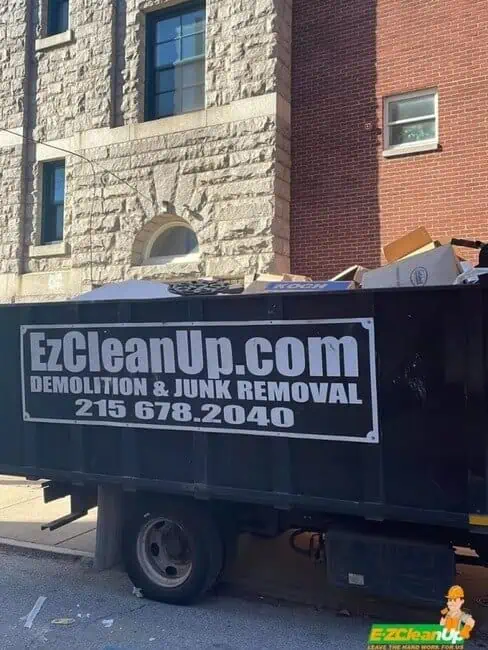
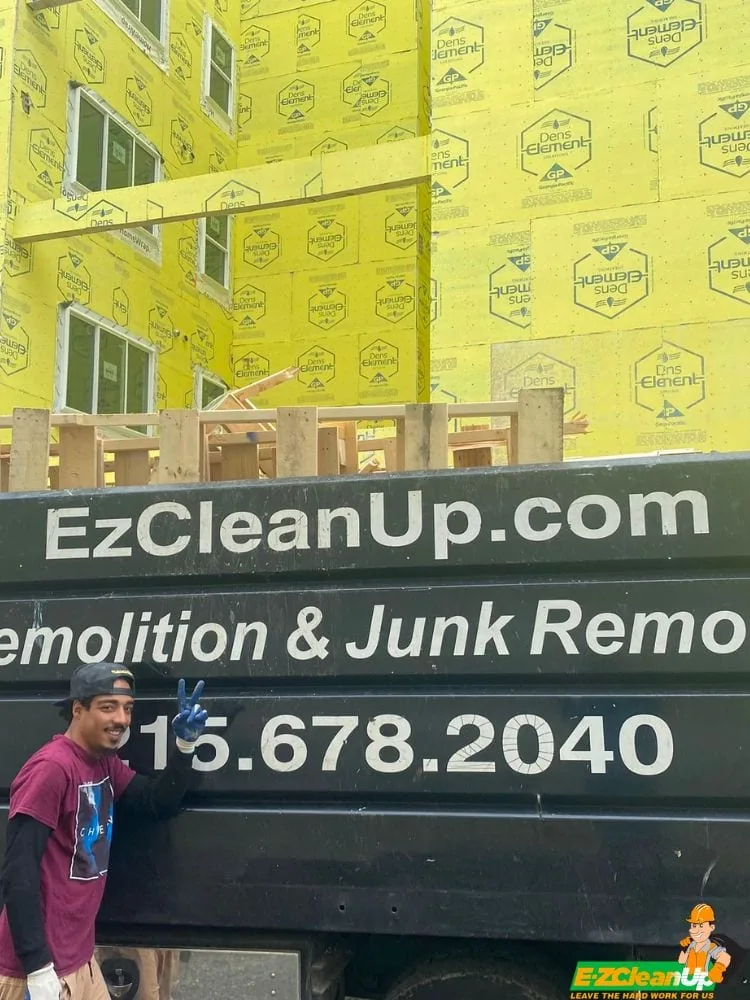
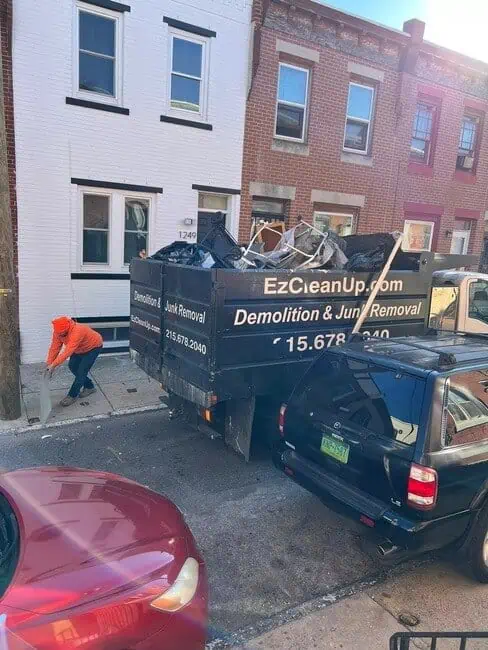
Conclusion
Mechanical demolition is a highly efficient and effective method for bringing down structures in a controlled and safe manner. It plays a vital role in various construction and renovation projects. Understanding the various aspects of mechanical demolition, including the methods, equipment, safety protocols, and planning, is essential for a successful project.
If you’re looking for a reliable and experienced mechanical demolition contractor, EZ Cleanup is here to help. With our expert team and commitment to safety, we provide top-notch demolition services tailored to your specific needs. Contact us today to discuss your project and discover how we can make your demolition experience hassle-free and efficient.

